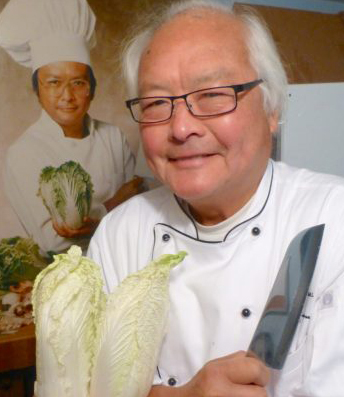Wok & Roll by Peter Kwong, (Frederic) Inter-County Leader
» Download this column as a Word document
Growing up in Hong Kong, I ate many things that were common in the daily diet but are considered barbaric here in the United States. However, after studying about foods that folks eat from different parts of the world, I find out that we are all from the same pot.
Some people eat whatever just to survive while others eat bizarre foods just to be adventurous. Living in the 21st century in America, we are indeed spoiled.
The older generations still remember eating all parts of an animal after you slaughtered it at the farm. But the only way our younger generation sees an animal organ these days is probably in the lab at school.
There are four must-have delicacies at any Chinese banquet: abalone, sea cucumber, fish stomach and shark’s fin. A few centuries ago, during the Qing Dynasty, other delicacies included camel’s hump, bear’s paw and monkey’s brain.

It is something like the scene from “Indiana Jones,” but the monkey was alive! I don’t want to go into details, but eating something that is still alive revolts me, even if it is considered a delicacy.
I love seafood. In Korea and Japan, they have a dish called sannakji, which is a sashimi (raw fish or meat) made with live octopus. They pick out the octopus from the tank, cut off its tentacles and clean it out while you are watching.
After they add some sesame oil and seasoning, they serve you the plate with the tentacles still moving. Folks are warned to chew their food properly, as the “live” tentacles can get stuck at your throat and literally choke you to death. Oh, poetic justice!
Another one is called ikizukuri, which is another sashimi dish that some western countries have banned. The chef would take a live fish from the tank and carefully slice off the meat, piece by piece, while the fish is still alive.
Then, after the plate is beautifully decorated and served, the chef puts the skeleton back into the tank. Not knowing that it is without any flesh left, the fish actually swims around for another three to four minutes. I do not have the nerve to watch the video again.
While I admire chef Andy Zimmern, who dares to eat anything in any country he travels to, there is one thing that he admits that he can’t eat. That’s stinky tofu. It is soybean cake, tofu, that has been fermented for two to three weeks and then deep-fried.
Whenever the vendor showed up in my neighborhood with his stalls, the whole street smelled like a sewer overflow. But folks would line up to get their share, actually happily paying for them.
Another stinky fruit that is banned from hotels and airlines is durian. Though many adore it and claim that it is indeed “the king of all fruits,” most others would hold their nose and quicken their steps when noticing a durian is being cracked open nearby.
My mother loves the thousand-year-old egg, but I have never developed an appetite for it. These duck eggs are covered in clay that is mixed with ash, salt, quicklime and rice hull, and buried.
When the eggs are unearthed, the whites have turned into a grayish gel, and the yolk is solid black. My mother would slice them lengthwise and eat them with pickled ginger slices. Ugh!
And how about balut, a favorite in Southeast Asia and in some parts of China. It is the embryo of chicken before it is hatched. You can still see the form of the chicken, with beak and all, and you just steam them and then eat them or cook them with wine. Supposedly great for women after childbirth. Double ugh!
While I had heard of Rocky Mountain oysters, or prairie oysters, I never knew until recently that they are bull testicles. But in China, ox penis is indeed a delicacy. I have seen a picture of a chef holding the dish, a large dish indeed. All I can say is, “Oh my goodness.” Guess I have been in America too long. And just how do you eat the darn thing?
A lot of countries treat insects as a delicacy, including tarantulas, locusts and grasshoppers. I did try some water cockroaches in Hong Kong. They were black, shiny and oily, and smelly too.
You peel off the wings, which were the tough part, and you suck out the soft innards and chew on those tiny hairy legs. I don’t remember how old I was then. I guess you are entitled to do dumb things when you are young.
While the Russians have their caviar (fish eggs), Mexicans have their escamoles, ant larvae from the agave plants. I was told the larvae are quite delicious but have yet to try … someday soon, with a lot of tequila as chaser, of course.
Then, when in Hong Kong, I did try some rice worms that were steamed with eggs. They were found in rice stalks amongst the rice fields. If I recall, I did have more than one helping. They were banned in Hong Kong, but my father had some special connection with the owner.
I did like to munch on fish eyeballs when I was a kid, too, but seeing how the Japanese eat the tuna eyeball makes me think twice. They were sold in the market in small packages. They stare at you like a huge camera lens. I don’t know where to start if I have to eat one.
And just when I thought I had tried everything, I encountered lutefisk here in northwestern Wisconsin. Maybe we should talk about that some other time.



